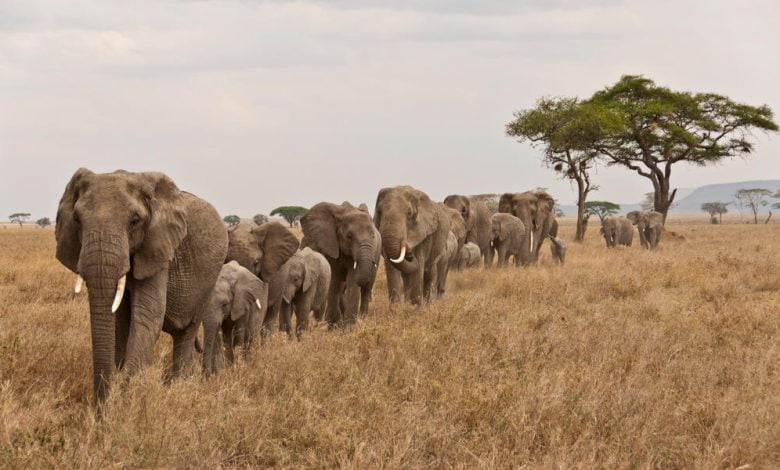Organs of the elephants

African elephant heart in a jar
The brain of an elephant weighs 4.5–5.5 kg (10–12 lb) compared to 1.6 kg (4 lb) for a human brain. While the elephant brain is larger overall, it is proportionally smaller. At birth, an elephant’s brain already weighs 30–40% of its adult weight. The cerebrum and cerebellum are well developed, and the temporal lobes are so large that they bulge out laterally.[69]
The throat of an elephant appears to contain a pouch where it can store water for later use.[6] The larynx of the elephant is the largest known among mammals. The vocal folds are long and are attached close to the epiglottis base. When comparing an elephant’s vocal folds to those of a human, an elephant’s are longer, thicker, and have a larger cross-sectional area. In addition, they are tilted at 45 degrees and positioned more anteriorly than a human’s vocal folds.[70]
The heart of an elephant weighs 12–21 kg (26–46 lb). It has a double-pointed apex, an unusual trait among mammals.[69] In addition, the ventricles separate near the top of the heart, a trait they share with sirenians.[71] When standing, the elephant’s heart beats approximately 30 times per minute. Unlike many other animals, the heart rate speeds up by 8 to 10 beats per minute when the elephant is lying down.[72] The blood vessels in most of the body are wide and thick and can withstand high blood pressures.[71]
The lungs are attached to the diaphragm, and breathing relies mainly on the diaphragm rather than the expansion of the ribcage.[69] Connective tissue exists in place of the pleural cavity. This may allow the animal to deal with the pressure differences when its body is underwater and its trunk is breaking the surface for air,[32] although this explanation has been questioned.[73] Another possible function for this adaptation is that it helps the animal suck up water through the trunk.[32] Elephants inhale mostly through the trunk, although some air goes through the mouth. They have a hindgut fermentation system, and their large and small intestines together reach 35 m (115 ft) in length. The majority of an elephant’s food intake goes undigested despite the process lasting up to a day.[69]
A male elephant’s testes are located internally near the kidneys.[74] The elephant’s penis can reach a length of 100 cm (39 in) and a diameter of 16 cm (6 in) at the base. It is S-shaped when fully erect and has a Y-shaped orifice. The female has a well-developed clitoris at up to 40 cm (16 in). The vulva is located between the hind legs instead of near the tail as in most mammals.
Determining pregnancy status can be difficult due to the animal’s large abdominal cavity. The female’s mammary glands occupy the space between the front legs, which puts the suckling calf within reach of the female’s trunk.[69] Elephants have a unique organ, the temporal gland, located in both sides of the head. This organ is associated with sexual behaviour, and males secrete a fluid from it when in musth.[75] Females have also been observed with secretions from the temporal glands.[46]
